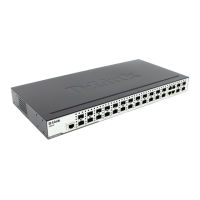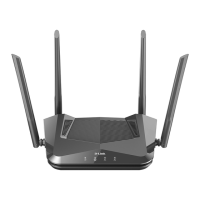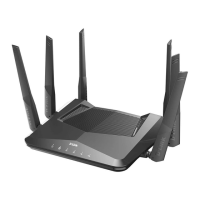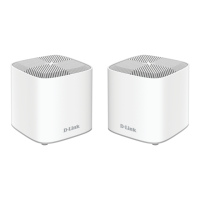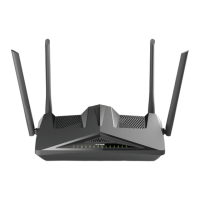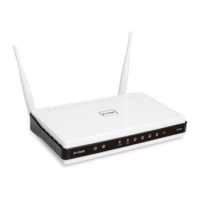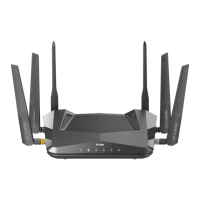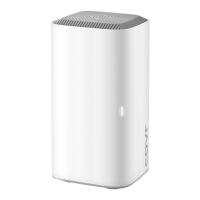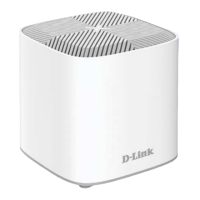xStack® DES-3200 Series Layer 2 Ethernet Managed Switch CLI Reference Manual
29
3
33
D-LINK SINGLE IP MANAGEMENT COMMANDS
Simply put, D-Link Single IP Management is a concept that will stack switches together over Ethernet instead of using stacking
ports or modules. Switches using D-Link Single IP Management (labeled here as SIM) must conform to the following rules:
SIM is an optional feature on the Switch and can easily be enabled or disabled. SIM grouping has no effect on the normal
operation of the Switch in the user’s network.
There are three classifications for switches using SIM. The Commander Switch(CS), which is the master switch of the group,
Member Switch(MS), which is a switch that is recognized by the CS a member of a SIM group, and a Candidate Switch(CaS),
which is a switch that has a physical link to the SIM group but has not been recognized by the CS as a member of the SIM group.
A SIM group can only have one Commander Switch(CS).
All switches in a particular SIM group must be in the same IP subnet (broadcast domain). Members of a SIM group cannot cross a
router.
A SIM group accepts one Commander Switch (numbered 0) and up to 32 switches (numbered 0-31).
There is no limit to the number of SIM groups in the same IP subnet (broadcast domain), however a single switch can only belong
to one group.
If multiple VLANs are configured, the SIM group will only utilize the default VLAN on any switch.
SIM allows intermediate devices that do not support SIM. This enables the user to manage a switch that is more than one hop
away from the CS.
The SIM group is a group of switches that are managed as a single entity. The Switch may take on three different roles:
Commander Switch (CS) – This is a switch that has been manually configured as the controlling device for a group, and takes on
the following characteristics:
It has an IP Address.
It is not a Commander Switch or Member Switch of another Single IP group.
It is connected to the Member Switches through its management VLAN.
Member Switch (MS) – This is a switch that has joined a single IP group and is accessible from the CS, and it takes
on the following characteristics:
It is not a CS or MS of another IP group.
It is connected to the CS through the CS management VLAN.
Candidate Switch (CaS) – This is a switch that is ready to join a SIM group but is not yet a member of the SIM group.
The Candidate Switch may join the SIM group through an automatic function of the Switch, or by manually configuring
it to be a MS of a SIM group. A switch configured as a CaS is not a member of a SIM group and will take on the
following characteristics:
It is not a CS or MS of another Single IP group.
It is connected to the CS through the CS management VLAN.
The following rules also apply to the above roles:
Each device begins in the Candidate state.
CS’s must change their role to CaS and then to MS, to become a MS of a SIM group. Thus the CS cannot directly be converted to
a MS.
The user can manually configure a CS to become a CaS.
A MS can become a CaS by:
Being configured as a CaS through the CS.
If report packets from the CS to the MS time out.
The user can manually configure a CaS to become a CS
The CaS can be configured through the CS to become a MS.
After configuring one switch to operate as the CS of a SIM group, additional Switches may join the group by either an
automatic method or by manually configuring the Switch to be a MS. The CS will then serve as the in band entry point
for access to the MS. The CS’s IP address will become the path to all MS’s of the group and the CS’s Administrator’s
password, and/or authentication will control access to all MS’s of the SIM group.
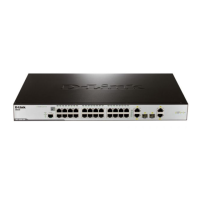
